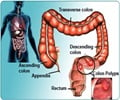After non-heart-related surgery, patients given aspirin to prevent heart problems had a higher risk of serious bleeding than the patients who did not receive aspirin.

Although many guidelines address prophylactic aspirin in a surgical setting, the focus is largely on cardiac surgery. Little guidance is available for patients undergoing non-cardiac surgery. This phase III trial followed earlier evidence suggesting that small doses of aspirin and clonidine can ward off heart attacks and heart-related death for such patients. Data for clonidine are to be presented separately at ACC.14.
POISE-2 enrolled 10,011 patients in 23 countries and grouped them by aspirin use: those who had been taking any dose daily for four of the six weeks before surgery, which became the continuation stratum, and those who had not, the initiation stratum. For the continuation stratum, aspirin use was stopped at least 72 hours before surgery. All patients received placebo or 200 mg aspirin just before surgery. The initiation stratum continued 100 mg aspirin or placebo daily for 30 days. The continuation stratum received 100 mg aspirin or placebo for seven days and then resumed their previous aspirin regimen. The primary endpoint of death and non-fatal heart attack at 30 days was no different between the two groups (7 percent in the aspirin group and 7.1 percent in the placebo group); however, major bleeding was significantly higher in aspirin-treated patients than in the placebo group (4.6 percent vs. 3.7 percent). The primary and secondary outcomes were similar in the two aspirin strata.
"POISE-2 demonstrated that adding aspirin on top of prophylactic anticoagulants in patients who are having non-cardiac surgery is not beneficial," said P.J. Devereaux, M.D., Ph.D., associate professor of clinical epidemiology and biostatistics at McMaster University, and lead investigator for the study. "An important caveat is that 65 percent of our patients were on prophylactic anticoagulants."
There is strong evidence that aspirin prevents perioperative blood clots in veins if an anticoagulant isn't given, he noted. No subgroup effects were seen for vascular versus non-vascular surgery or baseline risk according to the Revised Cardiac Risk Index.
With major bleeding known to increase the likelihood of post-surgical heart attack and a post-hoc POISE-2 regression analysis demonstrating this relationship, researchers considered why their study found a higher risk for bleeding but not for heart attack. "One possibility is that aspirin did prevent some heart attacks, but we were causing enough bleeding to nullify that benefit," Devereaux said. The study used clinical measurements for maximum reliability in identifying heart attacks, because symptoms are masked by pain-killing drugs in more than 50 percent of patients who have heart attacks after surgery.
Advertisement
"We're confirming a finding that bleeding itself can cause heart attacks," he said. "We need to find a better way to prevent bleeding so we can get back to how to prevent some of these thrombotic events." Patients will be followed for a year, and one-year data will be analyzed.
Advertisement
Source-Eurekalert













